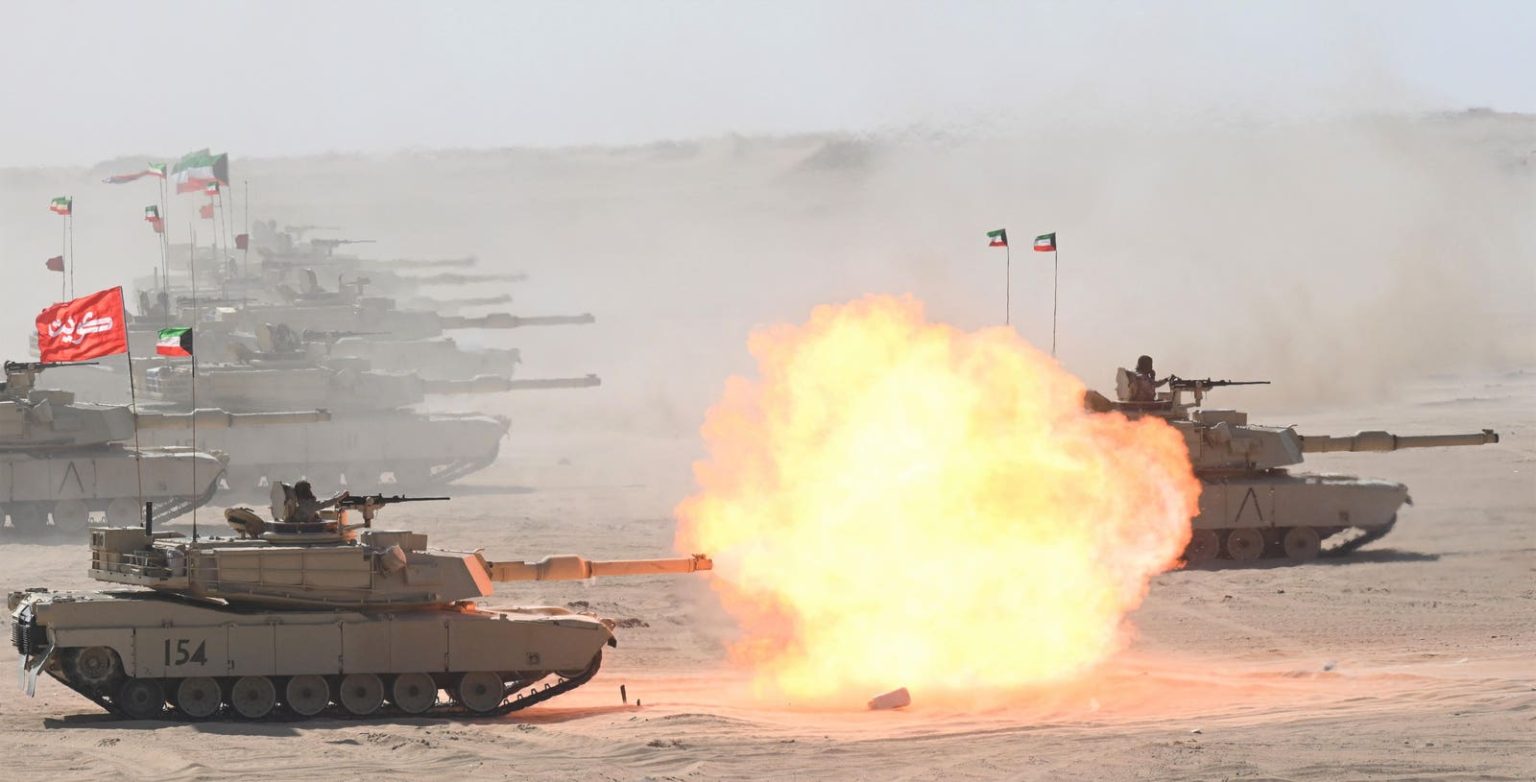The island kingdom of Bahrain in the Persian Gulf recently requested 50 M1A2 Abrams main battle tanks from the United States and associated vehicles and equipment for $2.2 billion. The order is the latest in a long line of multi-billion dollar purchases by the Arab Gulf states of some of the best Western-built tanks money can buy.
The Bahraini order is for the M1A2 SEPv3, the most advanced variant of Abrams currently in service.
While undoubtedly a large number of tanks for such a small state, with a population of less than two million, Manama’s M1A2 fleet will still be dwarfed by neighboring Saudi Arabia’s arsenal of almost 600 M1A2 tanks and Kuwait’s 218. Still, they are more than an adequate replacement for the island kingdom’s current fleet of aging M60 Patton tanks.
Other Gulf Cooperation Council states have also acquired advanced Western-built tanks in recent years.
The United Arab Emirates was the only country to buy the French Leclerc, acquiring almost 400. Abu Dhabi has since donated 80 to Jordan, making Amman the third operator of France’s main battle tank. Ironically, Emirati Leclercs serving in a peacekeeping mission in Kosovo noticeably possessed superior systems and sensors to those deployed by the French.
Oman was also the only foreign operator of Britain’s main battle tank, the Challenger 2, until London transferred 14 Challenger 2s to Ukraine following Russia’s February 2022 invasion.
South Korea tested a variant of its K2 Black Panter main battle tank modified for desert operations in Oman in July 2018. Seoul hoped to interest Muscat in buying 76 K2s for approximately $882 million. However, the onset of the Covid-19 pandemic reportedly postponed that deal indefinitely.
Qatar ordered 62 Leopard 2A7+ main battle tanks from Germany in 2013. The peninsular state hitherto operated only a single armored brigade outfitted with 30 aged French AMX-30 tanks. Doha has also made a deal to buy 100 Altay main battle tanks, a licensed K2 variant, from Turkey. Both acquisitions are enormous for such a small country, especially considering it has less than 400,000 citizens.
While Russia has made some inroads in the lucrative Arab Gulf arms market, it hasn’t managed to secure equally significant deals. Kuwait and the UAE operate Russian-built BMP-3 infantry fighting vehicles, and Abu Dhabi even acquired Pantsir-S1 air defense systems.
In 2017, Saudi Arabia agreed to a $3 billion deal with Russia for armaments such as the TOS-1A multiple rocket launcher, which included rights for local manufacture. Moscow even convinced the kingdom to buy its advanced S-400 air defense missile system, although no acquisition was ultimately made.
Since the onset of the ongoing Ukraine war, the Arab Gulf states are even less likely to buy Russian hardware in significant quantities, especially tanks and aircraft. Moscow’s difficulties providing logistical and technical support, on the one hand, and the risk of incurring sanctions from the United States, on the other, arguably make Russian arms less attractive than ever.
Russia had tried to secure large-scale arms sales to the Gulf in the past. It notably won a contract with Saudi Arabia for 150 T-90 main battle tanks, helicopters, and BMP-3s in 2008. The Kremlin denied a report at the time asserting Riyadh entered into the contract to entice Moscow to reduce ties with its rival Iran. Ultimately, Riyadh never took delivery of any Russian tanks or helicopters and later ordered 153 additional M1A2s in 2016, underscoring its commitment to buying American hardware. Additionally, Saudi interest is likely more diminished today than just a few years ago since Russia has agreed to supply Iran with advanced Su-35 Flanker fighter jets and Mi-28 attack helicopters.
Kuwait had sought to replace its sizable fleet of M-84 tanks—a license-built derivative of the T-72—it acquired from Yugoslavia with newer Russian T-90MS tanks but “indefinitely postponed” the deal in 2019. And, adding insult to injury from Moscow’s point of view, those ex-Kuwaiti T-84s may ultimately end up in Ukraine.
Bahrain’s Abrams order is not in the least bit surprising or out of the norm. It’s a reminder that Western-built tanks are predominant in the armored forces of the Arab Gulf states and will likely remain so for many more years and even decades to come.
Read the full article here





